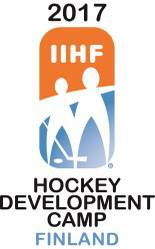VIERUMAKI – Constructing an ice hockey program from the bottom-up is no easy task, especially coming from a non-traditional hockey nation like the Philippines, Indonesia, or Hong Kong.
But where there is a will there is a way, and all three have joined 24 other MNAs for a series of Learn to Play seminars taking place this week as part of the 2017 IIHF Hockey Development Camp. Among the topics covered in the daily seminars was recruitment, effectively the starting point for any program.
“It’s hard work, recruitment is a neverending story,” said Johan Bollue, vice-president of the Royal Belgian Ice Hockey Federation and one of the Learn To Play Instructors helping to run the program.
With Belgium managing to double its total number of registered players from 1,032 in 2013 to 2,150 and is continuing to seek new ways to grow its numbers, Bollue stressed the need for an MNA to know its own markets and work hard to keep on driving recruitment through multiple channels.
“Most clubs don’t have enough players, although some clubs have told me they have too many players, I say to them that no they have bad organization because you can never have too many players, you need to get organized and have more teams at different skill levels for them to play on,” said Bollue.
Where to get started? Taking stock of the resources that you can dedicate to recruitment is a good way to begin.
“Having no budget is not an excuse to do nothing, it’s a challenge,” said Bollue. “You have to be creative and there are a lot of solutions.”
Modern clubs are no longer just a physical entity anymore but a virtual one, so an online presence beyond the traditional website is a necessary and inexpensive solution for reaching out to new recruits. Bollue highlighted how the technologies for communication and digital trends have changed in less than four years, especially when it comes to technology used by millennials to communicate.
“You can reach so many people in a very simple way,” said Bollue. “The 2016 IIHF Marketing Workshop showed us that there are many different platforms out there that can reach kids or parents, and you need to adjust your approach to find your target group.”
Bollue also raised the issue of kids having less time for recreation than in the past, and cited strategies that his country has used to make sport integration into daily life easier for families.
As most children begin to get into sports programs at age 6, parents are key to recruitment. An after school program was introduced in Belgium where kids could come to the club arena after school, participate in a homework class with a teacher and a meal program as a service to parents. The program goes a step further by offering on-site homework support, hockey/sport camps during holiday periods, family games and even language classes on ice.
“This is a service package to parents, who need to work and have other responsibilities to their children after work and can’t accommodate the clubs, so the clubs need to help them and accommodate them,” said Bollue. “We even offered a package to parents where they could go to Zumba classes during practice or use the gym facilities while their kids are training to help bring them closer to the clubs.”
In order to keep parents involved with the club but also to keep the environment fun for the children, a dedicated parent manager is often included within the club structure. Parents are not allowed to talk to a coach 24 hours after a game but can speak with the parent manager to create a more cooperative and less confrontational atmosphere between the parents and the clubs.
Bollue explained that his federation also uses bigger ice hockey events to help to promote the sport. At the time the 2014 Olympics Games in Sochi was the only time an ice hockey tournament is shown on TV in Belgium, so the a strategy was to give kids jerseys of the participating national teams and have them compete to raise awareness of ice hockey.
The presentation outlined an introduction to ice hockey program that follows the principles of Attract, Get In, and Connect. Start with a limited number of activities to draw the new recruit to the sport, following up with an event design to showcase the best features of ice hockey, and then connecting them with the closest clubs where they could join.
“The introduction can be something as simple of placing large cardboards boxes on the ice for preschoolers to skate around to show the fundamentals,” said Bollue. “During the World Girls’ Ice Hockey Day we had a limited number of girls so were able to secure a national team player to personally interact with each girl and increase their exposure to the sport.”
“We also held a Clash of the Year event, where senior elite players played in a game versus under-8 children,” said Bollue. “It’s for fun and of course the under-8s win in the shootout, but we brought in a press and fans in the stands to make it a big deal for the young kids, something they will always remember.”
The recruitment presentation is part of the IIHF Learn to Play Instruction program, which runs as part of the 2017 IIHF Hockey Development Camp. Taking part in the program are 35 MNA representatives who will go back to their home nations and implement the lessons learned during camp.
Click here to access the 2017 IIHF Hockey Development Camp pageADAM STEISS







